
Hello, everyone –
I have always been very interested in every aspect of censorship, from the official variety where a government chooses to jail authors it considers seditious to groups yanking a book from the shelves to destroy all available copies of it to aspiring writers being discouraged from writing about certain topics — or even about mainstream topics in non-mainstream ways — to the self-censorship that leads writers to avoid saying certain things in print. I could go on about it all day; it fascinates me.
However, since a blog is, by definition, one writer yammering at great length on her chosen topics, I thought I would open up the conversation for the next couple of months, at least from time to time, to hear what some other writers have to say on the subject. To this end, I have been busily soliciting many interesting authors to contribute guest blogs on how various aspects of censorship affect the writing life.
You’re going to be hearing from them periodically in the weeks to come, I’m delighted to report. There’s also going to be a contest, some door prizes, a book review, and what I hope will be a genuinely illuminating interview, but you’ll hear about all that when the time is ripe. For now, let me introduce the first guest blogger in my subtle censorship series, Eileen Cronin.
Eileen has the kind of writing credentials that make query letter-writers drool. An assistant editor for Narrative Magazine, she’s currently in the running for the coveted Pushcart Prize. Last year, she won the Washington Writing Prize; she has thrice been a finalist in the Pirate’s Alley Faulkner-Wisdom competition.
Currently, her novel, Orphan Sanctuary, is a quarter-finalist in the Amazon Breakthrough Novel Awards. If you want to help out with the judging, download her entry (as well as any others that might interest you, of course) and write a review before April 15.
I asked Eileen to write the first guest post in this series for a couple of reasons. First, I knew that I would not agree with everything she would say, something that strikes me as quite appropriate for this series. I want guest bloggers who will disagree with me. (And it turned out that I was right that we would not see eye-to-eye on the post: I wouldn’t characterize Amy Tan as infamous, for instance; my understanding of the 1970s film term blaxpoitation is quite different from hers, and as a long-time fan of actor Peter Dinklage, I’m quite surprised to hear that anyone would have had a problem with his role in Elf. But apparently we both rolled our eyes and cried, “Oh, come on!” at precisely the same point in The Poisonwood Bible.)
Another reason has to do with why I, at least, rolled my eyes at The Poisonwood Bible: I’ve noticed that there are not all that many complex disabled characters turning up in novels these days. One of the two protagonists in Eileen’s novel — yes, the one that’s up for the Amazon award, so you may read an excerpt for free here — is an amputee, a complex character who sidesteps the vast array of stereotypes surrounding disability.
Who better to ask, then, to talk to us about how and why fiction readers aren’t seeing many well-rounded disabled characters of late? Take it away, Eileen!



If you were pressed to come up with the names of five contemporary writers with physical disabilities, could you do it? Now, how about writers of fiction with physical disabilities?
Are you scratching your head? I am, and I have a physical disability.
Memoir is what most often comes to mind with respect to writers with physical disabilities, and there are some lovely examples. The Diving Bell and the Butterfly, written by the former editor-in chief of Elle Magazine Jean-Dominique Bauby, is one such book.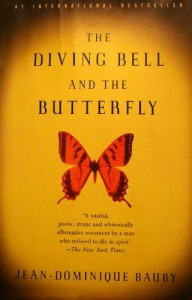 After his massive stroke caused a type of paralysis known as locked-in syndrome, Bauby dictated his book to a transcriber using the blink of an eye. His prose is incisive and ethereal as he guides us on his journey inward with the curiosity of a New World explorer.
After his massive stroke caused a type of paralysis known as locked-in syndrome, Bauby dictated his book to a transcriber using the blink of an eye. His prose is incisive and ethereal as he guides us on his journey inward with the curiosity of a New World explorer.
But physical disabilities should not be limited to memoir nor should writers with physical disabilities. I’ve heard it said in writers’ workshops that disability is a “subject” best handled in memoir, as if disability had no place in fiction. I’ve also heard workshop leaders advise that characters with disabilities should remain secondary or tertiary characters so as not to bog the story down. But writers of fiction tend to write about what they know, so where does that leave the fiction writer with a physical disability?
In my case, I have written a novel with an amputee as the protagonist, Orphan Sanctuary. An excerpt is now online as one of the quarter-finalists in the Amazon Breakthrough Novel Awards — reviews are welcome! — and it was a finalist in the Novels-in-Progress category of the Pirate’s Alley Faulkner-Wisdom competition.
It was difficult to write this story, as the choice of protagonists spawned from my own experience as an amputee. I know that students of writing are encouraged to write the “universal” story and in the past that has been interpreted as: Caucasian, college-educated, able-bodied heterosexuals. Those attitudes are shifting as we see more stories published by writers from different cultures.
Every year at the Squaw Valley Community of Writers, a summer workshop, Amy Tan, an infamous Chinese-American writer, generously allows the administrators to post a selection of her own rejection letters for all new writers to witness. My personal favorite is one from a publisher who questioned why Tan would rely so heavily on the “Chinese idiom.” Tan’s success proves the point that in the past stories about characters from cultures outside of Caucasian were called “ethnic stories,” today they are called “bestsellers.”
But writers with physical disabilities, even characters with physical disabilities are not nearly as visible.
And disability, by the way, is not as “marginal” as it has been characterized in the publishing industry. Given that estimates of persons with a disability (of any kind) could amount to up to twenty percent of the U.S. population, with numbers as high as fifty million, it’s likely then that disability affects most Americans, if not directly, then at least through a familial or personal connection. Disability is in fact “universal.”
And as persons with physical disability are more likely to be restricted to more sedentary activities, reading and/or writing perhaps occur more commonly in this population. I have only logic to rely on in this case—logic and Laura Hillenbrand.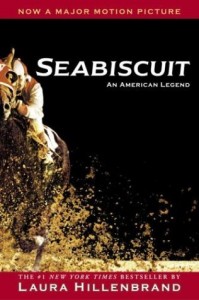
Hillenbrand, the author of Seabiscuit, was diagnosed with Epstein-Barr, also known as Chronic Fatigue Syndrome, a disease which often limits a person’s physical activity substantially. She has said in interviews that in becoming disabled she was forced to be more introspective; she had more time to read and write.
Other than Hillenbrand, where are all the writers of fiction with physical disabilities?
To find a few, I Googled “physically disabled writers” and the only contemporary writer I found was a woman named Noria Jablonski.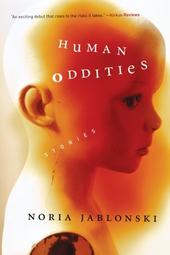 Jablonski’s collection of short stories, Human Oddities, has been compared to the photography of Diane Arbus, although in my estimation Jablonski’s strong suit is more her ear than her eye. Ironic when you consider that her disability is a partial hearing loss.
Jablonski’s collection of short stories, Human Oddities, has been compared to the photography of Diane Arbus, although in my estimation Jablonski’s strong suit is more her ear than her eye. Ironic when you consider that her disability is a partial hearing loss.
Jablonski is most often cited for her story, “Pam calls her mother on five-cent Sundays,” which is about Siamese twins, Fern and Rose, and this is an excerpt from a scene in a beauty salon where Fern and Rose are having their hair done:
“If we could,” said Fern, “we’d go back to being show folks. But live shows are kaput. People look down on them. Also, they’re so expensive to run. Now, if you’re lucky, maybe you could get a two-headed baby in a pickle jar—”
“Or a five-legged cow,” said Rose.
“Or one of those kids with a unicorn horn,” said Fern…
This dialogue works beautifully because the characters lack the self-consciousness that most would assume as part and parcel of being a Siamese twin. The characters are fresh, and while provocative, they are humorous and enchanting. The dialogue is musical.
It might even be that the driving force behind that marvelous ear is Jablonski’s hearing loss. Perhaps she hears things differently than most of us?
Jablonski’s work is noteworthy for bringing the physically disabled from the unmentionable and invisible into the spotlight. Still, her writing might also be criticized as another form of sensationalism; and many with physical disabilities could justifiably argue that there is a demand for characters whose physical disability is only one of many traits instead of the defining feature.
For me, the challenge in the invention of a hero is in developing a psyche, a cohesive blend of unique traits mixed with irony. Even more difficult is the task of unveiling humanity in its most compassionate light.
There have been recent portrayals of characters with physical disabilities by more famous contemporary writers who have no known physical disability.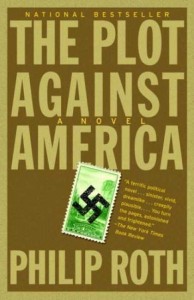 In The Plot Against America, Philip Roth includes Alvin, a World War II veteran with an amputation and the all too familiar “chip on his shoulder,” the plague of so many amputees in novels. Heaped onto this chip is Roth’s fascination with the festering wounds on the amputation: a metaphor no more evolved than the concept of Heggedy Peg. In the end, the rotting limb becomes symbolic of a rotting soul.
In The Plot Against America, Philip Roth includes Alvin, a World War II veteran with an amputation and the all too familiar “chip on his shoulder,” the plague of so many amputees in novels. Heaped onto this chip is Roth’s fascination with the festering wounds on the amputation: a metaphor no more evolved than the concept of Heggedy Peg. In the end, the rotting limb becomes symbolic of a rotting soul.
What’s new in that? And what a shame. There were so many fascinating aspects of Alvin left undeveloped.
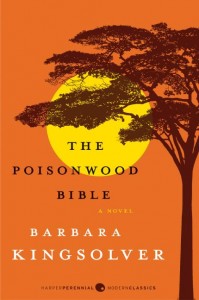 In The Poisonwood Bible, Barbara Kingsolver includes one twin, Adah Price, with hemiplegia (a paralysis on one side of the body). In doing so Kingsolver brings out a complex family dynamic: When disaster strikes, the twins’ mother grabs the able-bodied twin in the rush to evacuate, while the neurologically impaired twin has to survive on her own strength.
In The Poisonwood Bible, Barbara Kingsolver includes one twin, Adah Price, with hemiplegia (a paralysis on one side of the body). In doing so Kingsolver brings out a complex family dynamic: When disaster strikes, the twins’ mother grabs the able-bodied twin in the rush to evacuate, while the neurologically impaired twin has to survive on her own strength.
The scenario is beautifully rendered until the end of the book when the impaired twin grows up to become a neurologist and cures herself, which seems unlikely. Besides, it begs this question: Must a heroine be physically cured in order to make a viable heroine?”
For my money, the film industry has made more evolved choices than the publishing industry with regard to physically different characters in recent years. I doubt that this is due to an influx of screenwriters with physical disabilities, but somehow, disabled characters are sneaking in under the wire. My two favorite examples being: 3:10 to Yuma and The Station Agent.
 In 3:10 to Yuma, the hero is an amputee (so of course I love it). The concept is realistic enough without being weighty and yet it’s dynamic. Christian Bale as the one-legged-rancher-turned-bounty-hunter is soulful. His character (seen in the photo as crouching on what must be his “good leg”) exudes both heteroerotic as well as homoerotic sensuality. The dialogue is classic Western with a down-on-luck spin that takes an unexpected twist when the hero turns out to be an amputee.
In 3:10 to Yuma, the hero is an amputee (so of course I love it). The concept is realistic enough without being weighty and yet it’s dynamic. Christian Bale as the one-legged-rancher-turned-bounty-hunter is soulful. His character (seen in the photo as crouching on what must be his “good leg”) exudes both heteroerotic as well as homoerotic sensuality. The dialogue is classic Western with a down-on-luck spin that takes an unexpected twist when the hero turns out to be an amputee.
My favorite line from the movie is when Bale’s character speaks as a man who has been kicked around one too many times. He’s arguing to his wife that he’s going to become a bounty hunter because he’s tired of watching his boys go hungry, his wife go without, and his ranch fall apart; he says: “I been standin’ on one leg for three long years waitin’ for God to do me a favor…and he ain’t listenin.’”
He got me at “standin’ on one leg.”
 And then there’s The Station Agent, a film about a very short man with a larger than life persona. This film made it clear to me that an enduring sense of integrity could be sexier to some than six-pack abs. Peter Dinklage’s wry, terse style is disarming. Even in films where he plays a self-effacing caricature of a “dwarf,” he dominates the screen and comes out with his dignity intact. Some would argue that he loses points for roles such as the “angry dwarf” in Elf but I would argue that once established as a noteworthy ensemble actor, Dinklage has created the freedom to laugh at himself.
And then there’s The Station Agent, a film about a very short man with a larger than life persona. This film made it clear to me that an enduring sense of integrity could be sexier to some than six-pack abs. Peter Dinklage’s wry, terse style is disarming. Even in films where he plays a self-effacing caricature of a “dwarf,” he dominates the screen and comes out with his dignity intact. Some would argue that he loses points for roles such as the “angry dwarf” in Elf but I would argue that once established as a noteworthy ensemble actor, Dinklage has created the freedom to laugh at himself.
And that really is what’s at stake for writers and even characters with disabilities. In fact, that is what’s at stake for any group that is marginalized by the “taboo” label.
For those of us in the physical disability taboo box, it’s cumbersome to argue after every stereotypical portrayal. If physical disability were treated as multifaceted in literature, then perhaps the disabled would feel less of an affront each time a stereotype creeps in. Physical disability would move (as race has) closer to the mainstream.
 Consider the movie Shaft, for example. The same film concept with a slightly different spin over three decades yielded a vastly different result. In 1971, Shaft was considered “Blaxploitation,” (a term coined in the seventies to describe films that exploited black actors). But the 2000 remake was a success. Why is that? It’s because in the period between those movies an increasing number of films featured African-Americans in multifaceted roles. By the year 2000, the stereotype had lost much of its power.
Consider the movie Shaft, for example. The same film concept with a slightly different spin over three decades yielded a vastly different result. In 1971, Shaft was considered “Blaxploitation,” (a term coined in the seventies to describe films that exploited black actors). But the 2000 remake was a success. Why is that? It’s because in the period between those movies an increasing number of films featured African-Americans in multifaceted roles. By the year 2000, the stereotype had lost much of its power.
In advancing the storyline, the freedom of expression expands and we all feel a bit less constrained.
So maybe the publishing industry should give a closer look at physical disability. Take it seriously. Take it out of the closet. In doing so, we can all lighten up because we will have one less cultural taboo bogging us down.
And for those interested in accessing my novel, Orphan Sanctuary, please feel free to download it on Amazon!